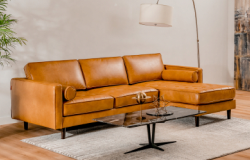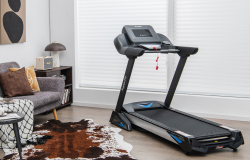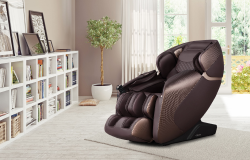- Furniture
- Living Room
- Sofas & Loveseats
- Accent Chairs
- Recliners
- Massage Chairs
- Coffee Tables
- End & Side Tables
- Ottomans
- Entertainment Centers & TV Stands
- Cabinets & Chests
- Bedroom
- Beds & Bed Frames
- Mattresses
- Nightstands
- Dressers & Chests
- Armoires & Wardrobes
- Makeup Vanities
- Jewelry Armoires
- Clothing & Closet Storage
- Bedding
- Kitchen & Dining
- Dining Room Sets
- Dining Tables
- Dining Chairs
- Bar Tables
- Bar Stools
- Kitchen Islands & Carts
- Sideboards, Cabinets & Buffets
- Outdoor
- Outdoor & Patio Furniture
- Patio Conversation Sets
- Outdoor Sectionals
- Patio Dining Sets
- Patio Dining Chairs
- Patio Tables
- Patio Bar Furniture
- Patio Rocking Chairs & Gliders
- Adirondack Chairs
- Outdoor Benches
- Porch Swings
- Hammocks
- Outdoor Chaise Lounges
- Beach & Lawn Chairs
- Outdoor Furniture Accessories
- Garden
- Raised Garden Beds
- Plant Stands
- Plant Supports
- Potting Benches & Tables
- Greenhouses
- Grow Tents
- Garden Tools
- Outdoor Grills
- Outdoor Decor
- Swimming Pools
- Outdoor Storage & Garages
- Sheds & Outdoor Storage
- Carports
- Garages
- Camping
- Camping Furniture
- Tents
- Coolers
- Air Mattresses & Sleeping Bags
- Kitchen
- Appliances
- Decor
- Bath
- Baby & Kids
- Toys & Hobbies
- Sports
- Pets
- Health & Beauty
- Sales & Deals
- LIVE

Adjustable Height Mesh Swivel High Back Office Chair
$189.00$471.00
Save $282 (59%)
Ergonomic Desk Chair with Lumbar Support and Flip-up Armrest
$99.00$166.00
Save $67 (40%)
Mesh Office Chair High Back Ergonomic Swivel Chair
$89.00$179.00
Save $90 (50%)
Ergonomic Mesh Office Chair Sliding Seat Height Adjustable with Armrest
$153.00$381.00
Save $228 (59%)
18 Inch to 22.5 Inch Height Adjustable Ergonomic High Back Mesh Office Chair Recliner with Hanger
$139.00$347.00
Save $208 (59%)
High Back Mesh Office Chair with Clothes Hanger
$149.00$371.00
Save $222 (59%)
Ergonomic Recliner Mesh Office Chair with Adjustable Footrest
$129.00$279.00
Save $150 (53%)
Ergonomic Mesh Office Chair with Adjustable Back Height and Armrests
$125.00$311.00
Save $186 (59%)
Adjustable Mesh Computer Chair with Sliding Seat and Lumbar Support
$189.00$234.00
Save $45 (19%)
High Back Mesh Executive Chair with Adjustable Lumbar Support
$139.00$279.00
Save $140 (50%)
High-Back Executive Chair with Adjustable Lumbar Support and Headrest
$109.00$134.00
Save $25 (18%)
High-Back Mesh Executive Chair with Sliding Seat and Adjustable Lumbar Support
$169.00$239.00
Save $70 (29%)
Ergonomic Office Chair with N Type Lumbar Support and Adjustable Headrest
$149.00$186.00
Save $37 (19%)
Mesh Office Chair with Adaptive Lumbar Support, Flip-up Armrests, Reclining Backrest
$119.00$139.00
Save $20 (14%)
Choosing the right ergonomic chair is crucial for your health, productivity, and overall well-being. With so many options available, it's essential to consider your specific needs and preferences. This guide will walk you through everything you need to know to make an informed decision when purchasing an ergonomic chair.
Understand Your Needs:
• Assess your typical work routine: Do you spend long hours sitting at a desk? Are you prone to back pain or discomfort?
• Consider your body type: Are you tall or short? Do you have any specific ergonomic requirements?
Key Features to Look For:
• Adjustability: Look for chairs with adjustable seat height, armrests, lumbar support, and recline function. This ensures that you can customize the chair to fit your body perfectly.
• Lumbar Support: Proper lumbar support maintains the natural curve of your spine, preventing back strain and promoting good posture.
• Seat Depth and Width: The seat should be deep and wide enough to support your thighs comfortably without putting pressure on the backs of your knees.
• Material: Choose a breathable and durable material that provides both comfort and support, such as mesh or high-quality foam padding.
• Mobility: Opt for chairs with smooth-rolling casters and a swivel base, allowing for easy movement and accessibility around your workspace.
Types of Ergonomic Chairs:
• Task Chairs: Ideal for office environments, task chairs offer basic ergonomic features and are suitable for general use.
• Executive Chairs: Designed for long hours of use, executive chairs often come with additional padding, adjustable features, and a high back for added support.
• Kneeling Chairs: These chairs promote an open hip angle and better posture by tilting the pelvis forward, making them suitable for individuals with lower back pain.
• Ball Chairs: Ball chairs engage your core muscles and promote active sitting, but they may not be suitable for extended periods of use.
Budget Considerations:
• Set a budget range based on the features you need and the quality you desire. Remember, investing in a high-quality ergonomic chair is an investment in your health and productivity.
• Consider the long-term benefits of a durable chair versus the short-term cost savings of a cheaper alternative.
Try Before You Buy:
Whenever possible, test out different chairs in person to assess their comfort, adjustability, and overall feel.
Pay attention to how the chair supports your body and whether it alleviates any existing discomfort or pain.
Additional Tips:
• Ergonomic Accessories: Consider purchasing additional accessories such as a footrest, ergonomic keyboard, or monitor riser to further enhance your workstation setup.
• Regular Movement: Even with the best ergonomic chair, it's essential to take regular breaks, stretch, and move around to reduce the risk of stiffness and fatigue.
Final Thoughts:
• Prioritize your comfort and well-being when selecting an ergonomic chair. A chair that properly supports your body and promotes good posture can significantly impact your overall health and productivity.
• Take your time to research and explore different options before making a decision. Your body will thank you in the long run.
Remember, investing in an ergonomic chair is an investment in your health and productivity. By considering your specific needs, understanding key features, and trying out different options, you can find the perfect ergonomic chair to support you through long hours of work. Happy sitting!
















 Added to
Added to 
 4.3
4.3








